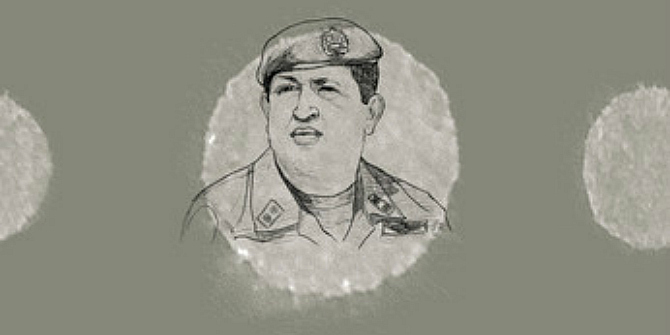Ten years on, what have been the principal impacts of the terrorist attacks of 9/11 on the external policies and international outlooks of the world’s major powers? This book investigates a range of international responses to the events of 9/11, to evaluate their consistency over time; to analyse their long-term significance and to consider both their implications for the international security agenda and the prospects for international cooperation in addressing the challenges posed. Jude Howell believes the breadth of the book will ensure that it provides a useful source for researchers and students in the fields of security studies and international relations.
 9/11 Ten Years After: Perspectives and Problems. Rachel E. Utley. Ashgate. June 2012.
9/11 Ten Years After: Perspectives and Problems. Rachel E. Utley. Ashgate. June 2012.
More than a decade after the cataclysmic attacks on the Twin Towers in 2001 US and allied forces remain on the ground in Iraq and Afghanistan. Despite the death of Osama Bin Laden in 2011, growing public disenchantment with military engagement in Iraq and Afghanistan, and the mounting financial and human costs of warfare, President Obama and allied governments have re-stated their commitment to countering Islamic terrorism. Though both UK and US political leaders have abandoned the language of the ‘War on Terror’, the perception of an Islamic threat continues to dominate national defence strategies. This edited collection sets out to assess the challenges and effects of a decade of mainly militaristic counter-terrorism on the world’s major powers, defined here as primarily the permanent members of the UN Security Council. Case-studies thus embrace USA, UK, India, China, France and Russia. The book is ambitious in its aims and broad in its terrain, striving to investigate not only the range, continuity, significance, constraints and impact of international responses to the 9/11 events and their implications for international security, but also the domestic challenges of radicalisation, the role of NATO, the conundrums of international law, and the challenges of ‘information warfare’.
As a rapidly emerging economic and political major power, it is perhaps apt to scrutinise China’s counter-terrorism policies, how these have changed since 9/11, the geo-strategic and domestic drivers governing these, and the implications of these for international security. Marc Lataigne’s chapter provides a neat overview of China’s counter-terrorism policies since 9/11. He highlights the points of convergence with the USA, concluding that anti-terrorism is one area of foreign and security policy where the two countries ‘sail in the same boat’. Though China deplored the 9/11 attacks, it has been wary of the USA’s interventions in Iraq, Afghanistan and Pakistan and rather predictably has repeatedly emphasised the importance of domestic sovereignty. One notable change that Lataigne underlines is China’s shift after 9/11 from a more unilateral approach towards security, especially in non-traditional domains such as terrorism, towards a more multi-lateral approach. This is mirrored institutionally in the growing significance of the Shanghai Co-operation Organisation, which has continued to incorporate new observers and partners and expand activities to include joint military operations, causing some unease in the USA. Two key drivers underpinning China’s counter-terrorism policies relate to mounting concern around secessionist groups in Xinjiang and Tibet, their regional and international links, and more broadly, regional stability. China was thus quick to take advantage of the increased international attention given to terrorism to link these secessionist struggles with terrorism and so legitimate interventions in these provinces.
Similar to China, though for other reasons, India has been wary of committing militarily to the US War on Terror efforts and has also taken advantage of the opportunities created by the rising significance of the perceived Islamic terrorist threat to strengthen its counter-terrorist structures. Rahul Roy-Chaudhury and Antoine Levesques’ chapter focuses primarily on the India-Pakistan axis as a driver for counter-terrorist rhetoric and activities. They underline the difficulties for India in engaging with the US War on Terror because of its proximity to Pakistan, the historical tensions between the two countries and the considerable risk that joining in with American military initiatives in the region would make relations with its neighbour even worse. The authors provide rich, descriptive detail of how India has boosted its counter-terrorist legislation, national intelligence and security infrastructure but there is little sense of how this impinged on or was informed by domestic politics. It would also have been instructive to have more detail and nuance about why and how the level of violence decreased in Kashmir, how this related to India-Pakistan relations and the role of the US in the region.
Whilst most chapters in the book focus on the hard dimensions of counter-terrorism, Gary Rawnsley’s chapter provides a refreshing account of the use of ‘soft dimensions’ such as media and information. As he cogently argues, the War on Terror ‘has largely been a war of ideas’. He explores the growing salience of communication technologies in reporting and prosecuting wars, or what he calls a ‘new ecology of wartime’ that renders the relationship between journalists and militaries much more complex. Not only have new communication technologies fostered greater interactivity in reporting, but they have also made journalism far less mediated, as the meteoric rise of the ‘citizen journalist’ well demonstrates. New communication technologies have also altered the production and manipulation of propaganda and counter-propaganda. As Rawnsley rightly points out, the US military’s use of fictitious ‘sock puppets’, that is, the use of ‘persona management software’ strains the legitimacy of liberal democracies, indeed putting them on a par with authoritarian regimes in the control of media and information. Ultimately Rawnsley underlines the need to consider not just the presentation of policy but also policy itself, and particularly policy that addresses the political, economic and social issues that can on occasions radicalise Muslim youth.
Overall this is a timely book, looking back over ten years of the War on Terror and reflecting on the diverse responses of states to US calls for assistance. The book would have benefited from a far more robust conclusion that teased out more fully the findings of the chapters in relation to the ambitious range of aims and questions set out in the introduction. Though there is little in the book that is new in terms of empirical findings or analysis, the breadth of the book will ensure that it provides a useful source for researchers and students in the fields of security studies and international relations.
——————————————————————————————-
Jude Howell is Professor and Director of the Centre for Civil Society at the London School of Economics and Political Science. She has written extensively on civil society, governance, gender, security, the politics of development and China. Her recent books include Gender and Civil Society (with Diane Mulligan), Civil Society and Development (with Jenny Pearce) and Governance in China. Read more reviews by Jude.








2 Comments